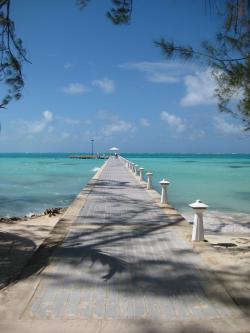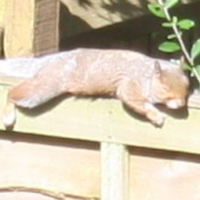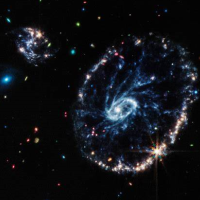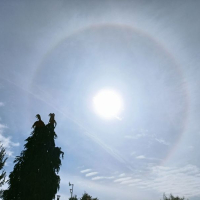jks
About
- Username
- jks
- Joined
- Visits
- 36,725
- Last Active
- Roles
- Member, Administrator, Moderator
- Points
- 670
Reactions
-
v1.810
From the CHANGE_LOG file:
v1.810 May 15, 2025
Admin interface (desktop):
Type "h" or "?" to see a help panel for the admin page.
Keyboard shortcuts: Tired of reaching for the mouse or trackpad to select a new tab in the
admin navigation bar? Now just type the beginning character of a tab name to switch to it,
e.g. 'd' for the DX tab. If more than one tab is matched they will cycle left-to-right e.g.
's' selects between "Status" and "Security". Typing a capital letter cycles right-to-left.
The left/right keys also works. On the extensions tab the up/down arrow keys cycle the
extension menu on the left side. There is a quirk related to the console tab described in
the help panel.
Fixed bug that broke "retain focus" mode of certain input fields. Like the "DX label filter"
accessed from the "@" shortcut key. When you make an entry in the "ident" or "notes" field
those entries are supposed to remain selected so that you can make subsequent entries without
have to reselect the field (e.g. by clicking on it). Same for the "freq/ident/notes" fields
on the admin page "DX" tab. I'm surprised no one complained about this!
Fixed ALE extension processing of URL parameters. (thanks DK9FI)
-
v1.809
From the CHANGE_LOG file:
v1.809 April 5, 2025
The output from my.kiwisdr.com has been expanded to include additional information:
Proxy links in addition to local IP links if proxy mode is setup and running.
Connection type & status (i.e. settings on admin page "connect" tab).
Kiwi and Debian software versions.
Kiwi product model and Beagle type.
The Debian hostname is shown after the serial number if it has been customized from the
default "kiwisdr". Useful if you have multiple Kiwi on your network and you want to
distinguish them by name instead of solely by serial number.
Admin network tab has new field "Debian hostname" to complement the my.kiwisdr.com change above.
This changes the actual Linux hostname and is not just a Kiwi configuration parameter.
DX label fixes (desktop):
When an extension is open, and you click on a dx label specified to open the same named
extension, the extension won't get closed and re-opened. Instead, any new extension
parameters contained in the dx label are sent directly to the open extension for
further processing. Example: clicking on a different LF time station causes the
timecode extension to change its decoding setup.
Label only turns magenta (indicting extension will be opened on click) when mousing over
label _without_ a modifier key pressed (shift etc). For example shift-clicking a label
opens the label edit panel. So it doesn't make sense to be turning the label magenta
because an extension isn't going to be opened when you click it.
The DX help panel is opened if the cursor is in the label area and "h" or "?" pressed.
The stored DX database can now have a custom name, 15 chars max. (thanks Mauno WRTH)
Change the first line of the dx.json file from:
{"dx":[
to:
{"my-custom-name":[
If this is of interest you presumably already have a custom dx.json file you're loading
via the admin DX tab "import JSON" button. If not, just use the "export JSON" button
to download a copy of dx.json and use a text editor to make your changes.
The custom name will appear in all the usual places: The left end of the frequency
scale, the various database selection menus, etc.
When frequency scale offset is in use (i.e. using a downconverter) fixed broken behavior of:
"VFO A/B" button. (thanks F5AFY)
"Zoom-to-band" button.
"--- +++" buttons when frequency scale offset was not a multiple of 1 kHz.
S-meter URL query: Allow optional mode e.g. my_kiwi:8073/s-meter?14200usb (thanks F5AFY)
Prevent Beagle LED control conflict when admin backup function running. (thanks F5AFY)
Save/restore waterfall timestamp parameters in browser storage. (thanks nitroengine)
Removed debugging print causing lots of "AJAX_STATUS ..." messages in admin log when
wsprdaemon or similar application are in use. (thanks DL4ZBE)
Admin local blacklist now disallows entry of subnets which would otherwise exclude local
network addresses or the loopback IP address. (thanks G2YT)
When the "device preset" menu of the "Mouse wheel / trackpad setup" section of the user tab
is set to anything except "custom" the three fields below are disabled for input.
Although they still show what the preset values are. (thanks ZL2P)
-
Waterfall timestamp setting saved in cookies or browser storage [fixed in v1.809]
Fixed in v1.809. The timestamp menu setting, including any custom value, and URL/local menu setting will be saved in browser storage.
Also, the complete list of URL parameters is here: http://kiwisdr.com/info/#id-user-tune
-
66.666 MHz TCXO for KiwiSDR. Jamming/spoofing GNSS.
Thinking about this some more (because I can't help myself). Higher frequency time stations are more useful because there is more relative frequency offset to visualize. At least when doing a manual calibration and you need to "eyeball" the offset in the waterfall (zoomed all the way in).
But HF time signals are more prone to having junk carriers close to the time station carrier (I've seen this) compared to LF time signals. But the later are not always present depending on antenna and Kiwi location. Hence the good SNR requirement mentioned by @nitroengine.
One thing we do have I remember now is the audio PLL associated with the SAM mode. So if SAM is able to achIeve a lock the exact offset can be determined rather than derived from, say, the number of waterfall bins which at z14 is only 1.76 Hz/bin (1.8 kHz span / 1024 bins). This is why the manual calibration instructions say to use the IQ extension for the ultimate fine tuning of the calibration.
Also needed is probably the more difficult part: Analysis of several different time signals at different frequencies and some sort of voting logic before there can be confidence in a solution.
-
Tech Minds YouTube review questions #5
Questions from the Tech Minds YouTube review:
What would it take for this device in order to extend its range down to 1 kHz or even DC? I'm trying to monitor dirty electricity coming off my house's electrical wiring.
You should consider an active probe or magnetic loop feeding into a sound card for that kind of thing. The right kind of amplification/matching between the two will be needed. Then run one of the sound card SDR programs to get a spectrum.
The Kiwi receives signals down to 10 kHz (when the Russian Alpha navigation system is active, see: rsdn-20-beacons-reactivated) And has some sensitivity to 7 kHz. And I've seen some Kiwi VLF spectrums where you can clearly see 60 Hz harmonics above 10 kHz. It's quite amazing I think.
One question: if using on my home network, would there be the same latency as with online KiwiSDRs? I find that any I've used online have a delay of about a second or more between clicking on/selecting something and it actually happening. I'd find this annoying if using locally.
This is not documented, because it can cause more problems than it solves, but try adding to the URL:
?abuf=0.25(or perhaps?abuf=0.5if you're getting audio drops as a result of having too little buffering). So something likemy_kiwi:8073?abuf=0.25or if you're using other URL parameters like f=my_kiwi:8073?f=7150usb&abuf=0.25Theabuf(audio buffer) parameter is specified in seconds and applies to the current connection only.Question from a user: if I listen via PC everything works fine. If I go to the link with my Android smartphone this appears: Unable to reach the site. Why? Other.. KIWI sdr app is not available for my device
Don't know why your Android smartphones wouldn't be able to connect. I use Android tablets here to verify Android functionality.
The old KiwiSDR app for Android was removed from the Android store, but I saved a copy. See this thread: https://forum.kiwisdr.com/index.php?p=/discussion/comment/20578#Comment_20578
ET ships aka UFOs seem to be standing wave EM energized on the hull, the small 10-15m scout craft likely have a main tone around 10MHz and complex harmonics up and down, all the way down to audio range and at least up to GHz. GHz might even be a dominant component. Try looking for it. Sightings suggest at least 200 sorties around the world every day and they might put out considerable power levels so should be detectable from 1000km+. Larger craft will have deeper tone presumably. It will be a strong signal that has no data. When close they sometimes emit a sound like an agitated bell, a bit like meditation vessels. Similar sound might be recognizable in RF as a beat frequency or something. No FM modulation of course since it's a side effect of the propulsion.
It is a certainty that ET ships frequent our skies and there is strong evidence of EM and RF, only a question of how easy are they to detect. Coastal areas might be the most frequent as the regulars seem to have bases on earth, specifically in the continental shelf sea floor.
Yes! Finally someone who understands!








